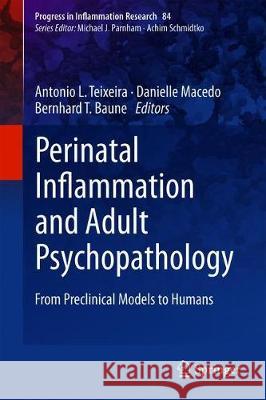Perinatal Inflammation and Adult Psychopathology: From Preclinical Models to Humans » książka
topmenu
Perinatal Inflammation and Adult Psychopathology: From Preclinical Models to Humans
ISBN-13: 9783030393342 / Angielski / Twarda / 2020 / 268 str.
Perinatal Inflammation and Adult Psychopathology: From Preclinical Models to Humans
ISBN-13: 9783030393342 / Angielski / Twarda / 2020 / 268 str.
cena 685,93
(netto: 653,27 VAT: 5%)
Najniższa cena z 30 dni: 655,41
(netto: 653,27 VAT: 5%)
Najniższa cena z 30 dni: 655,41
Termin realizacji zamówienia:
ok. 22 dni roboczych
Dostawa w 2026 r.
ok. 22 dni roboczych
Dostawa w 2026 r.
Darmowa dostawa!
Kategorie BISAC:
Wydawca:
Springer
Seria wydawnicza:
Język:
Angielski
ISBN-13:
9783030393342
Rok wydania:
2020
Wydanie:
2020
Numer serii:
000133115
Ilość stron:
268
Waga:
0.54 kg
Wymiary:
23.88 x 19.56 x 1.52
Oprawa:
Twarda
Wolumenów:
01











